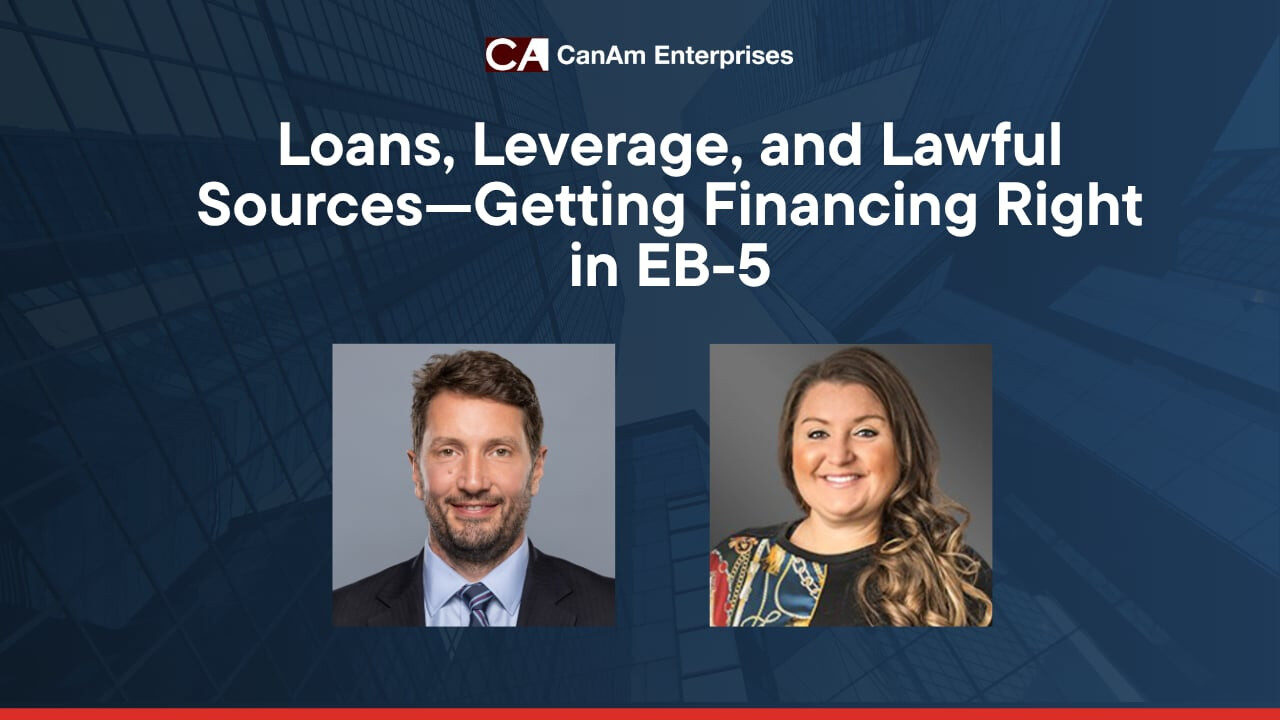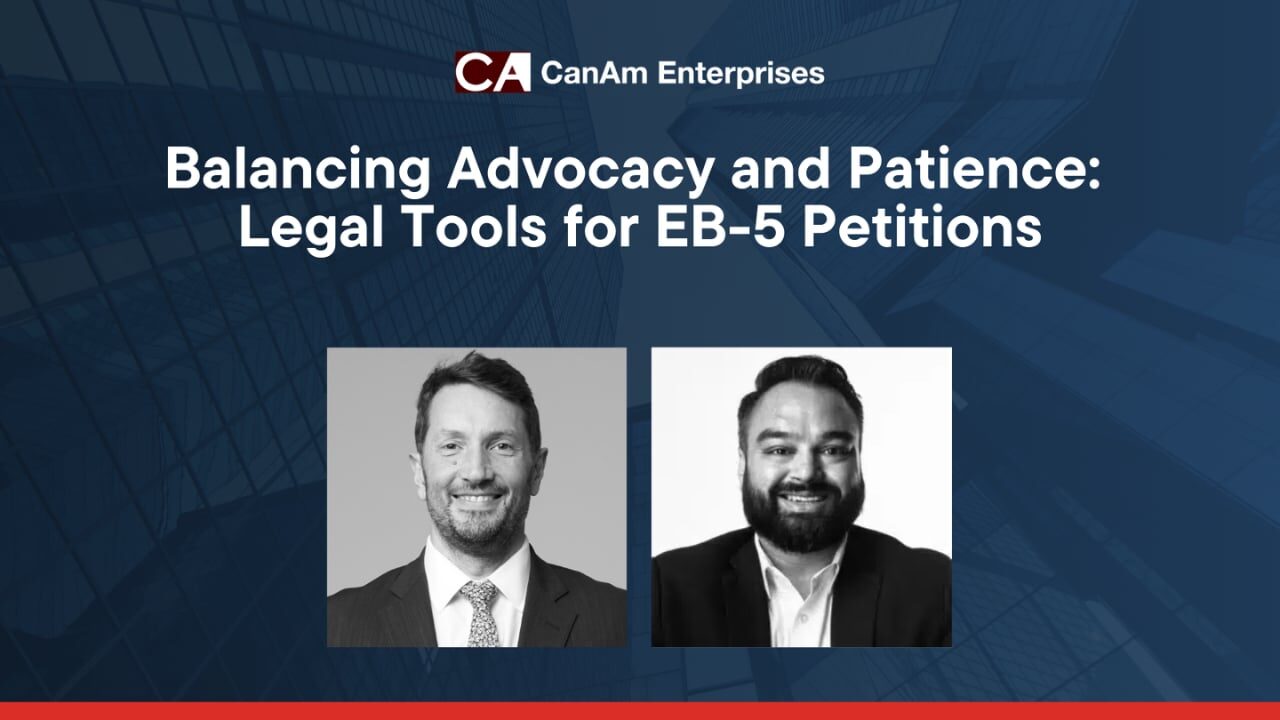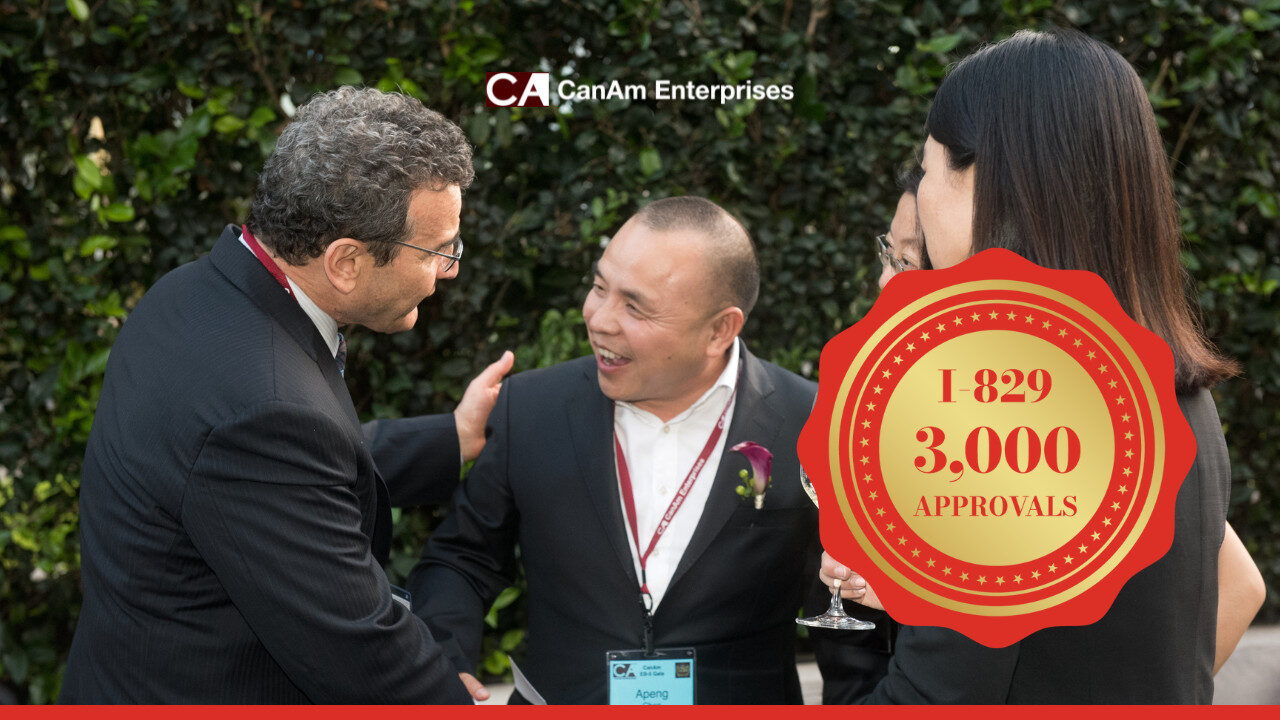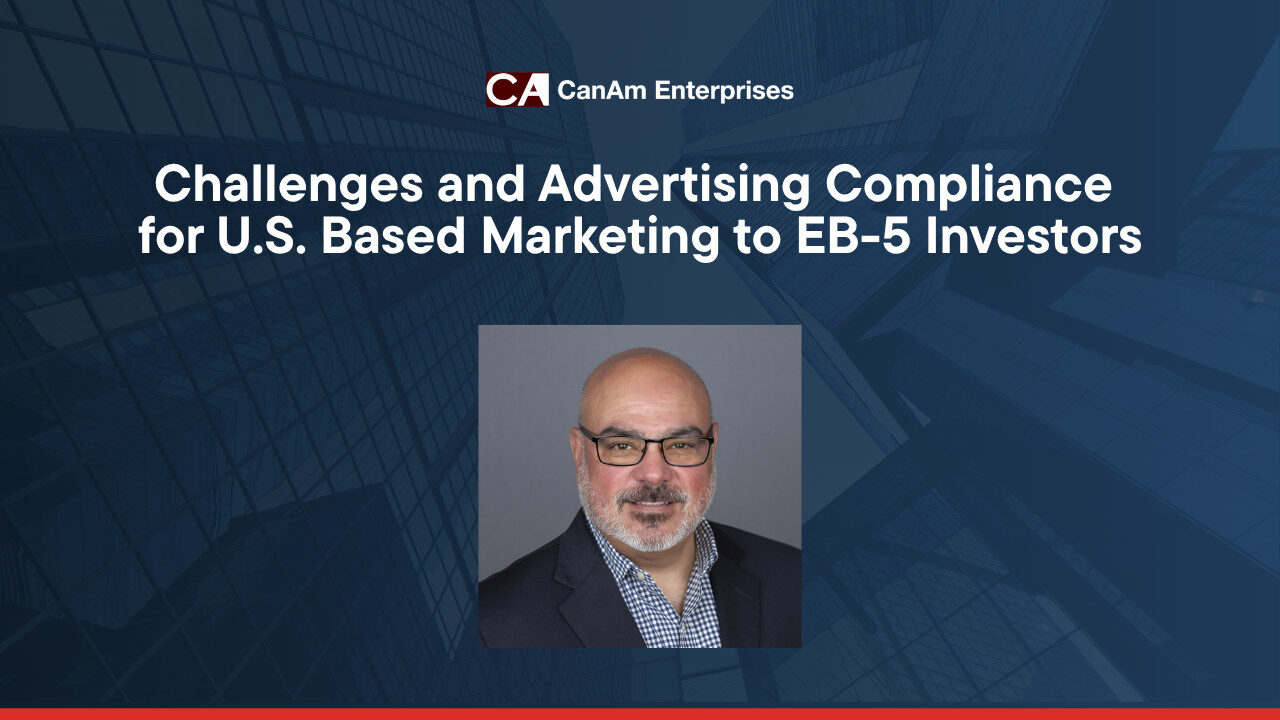In a recent webinar, CanAm Investor Services CEO Pete Calabrese sat down with Mike Xenick, Managing Director at Sequence Financial Specialists LLC, to discuss one of the most important—but often least understood—aspects of the EB-5 program: compliance. Together, they offered investors and industry participants an inside look at the responsibilities broker-dealers carry, the evolving regulatory landscape, and the best practices that protect EB-5 investors.
As Pete emphasized in his introduction, “EB-5, even though it is a very unique security, it is a security. And there are different compliance aspects that go along with it”.
The Growing Role of Broker-Dealers in EB-5
Both Pete and Mike agreed that the role of broker-dealers in EB-5 has expanded significantly over the last decade. Broker-dealers are not just intermediaries—they are guardians of process integrity and investor protection.
Mike explained:
“A lot of investors just focus on EB-5 as a conduit to a green card. They’re not so much focused on the fact that this is private security, your capital is 100% at risk. Our job is to make sure investors understand the risks as well as the benefits”.
This dual focus—highlighting opportunity while clarifying risks—is central to broker-dealer responsibilities. Pete added that the distinction lies in broker-dealers’ ability to conduct rigorous due diligence and suitability assessments for each client:
“Even though this needs to be an at-risk investment, it doesn’t need to be overly risky. It needs to meet the level of risk you are comfortable taking”.
Read More: The Strength of CanAm: The Critical Role of a Broker-Dealer in EB-5 Investments
Regulation Best Interest: Raising the Bar
The introduction of SEC Regulation Best Interest (Reg BI) in 2019 replaced traditional suitability standards with a higher compliance threshold. Under Reg BI, broker-dealers must prove that an EB-5 investment recommendation is in the investor’s best interest, not merely suitable.
As Mike described:
“We need to justify why this investment was in this investor’s best interest. It’s not about just getting as many investors in as we can—it’s really got to be focused on them and making sure that we’re doing the right thing”.
This investor-centric approach is one of the biggest shifts in EB-5 distribution practices, ensuring better alignment between investors’ goals and the projects they choose.
The Reform and Integrity Act: A New Era of Transparency
The EB-5 Reform and Integrity Act of 2022 (RIA) reinforced this compliance culture by embedding stricter due diligence, disclosure, and transparency requirements into the program.
Pete noted, “Transparency and suitability assessments for investors are what hopefully get them to the outcome that they’re looking to achieve”.
Mike underscored that the industry itself pushed for these guardrails:
“For so long, the EB-5 market was deemed super high risk… But we knew the industry needed protections, needed ways to act like a broker-dealer would—focused on protecting the investor and focused on disclosure”.
The RIA’s compliance mandates have also affected marketing practices, especially distinguishing between offshore (Reg S) and onshore (Reg D) offerings, where rules differ.
Compliance Challenges in Marketing EB-5
Marketing EB-5 investments isn’t as simple as handing out glossy brochures. Broker-dealers face strict rules ensuring all communications align with offering documents.
As Mike pointed out:
“You can’t say things that can’t be backed up by what’s in the offering documents. That’s a challenge because sales teams want to highlight success—but compliance requires accuracy above all else”.
Pete added that having broker-dealers involved “shines more of a light on some of these different aspects that need to be complied with”.
Key Obligations for EB-5 Investors
The conversation also turned to what investors themselves must understand before wiring their capital. Both Pete and Mike agreed on three core obligations:
- Know the risks. “Investors need to know they could lose all their money,” Mike said bluntly.
- Know the partner. EB-5 investors will be in a multi-year relationship with their regional center and broker-dealer. Trust and transparency are essential.
- Know the process. From escrow releases to expected communications, investors should have a checklist of what to expect during the lifespan of their investment.
“We encourage investors to truly understand what they’re getting themselves into. Ask questions like: Where does the money go? When does it start earning interest? How will I be kept updated?”.
Best Practices That Protect Investors
To close the discussion, Pete and Mike outlined the best practices their firms follow to maintain integrity and consistency:
- Rigorous due diligence. Internal and external reviews of projects, legal structures, financials, and immigration metrics.
- Standardized comparisons. Tools that let investors compare 40 factors across projects—from capital stack to exit strategy—“apples to apples”.
- Risk education. Explicitly highlighting risks, not just benefits, in investor discussions.
- Consistent team training. Biweekly calls and strategy meetings to ensure representatives deliver uniform, compliant messages.
- Automation. Streamlined onboarding processes, purchaser representative documentation, and record-keeping for transparency.
As Pete summarized:
“At the most basic level, we need to do our homework on both the project and the investor. That means ensuring what’s being offered is a suitable investment, that risks and benefits are explained fairly, and that investors fully understand what they’re getting into”.
Why Broker-Dealers Matter More Than Ever
Ultimately, both leaders agreed that the broker-dealer model strengthens not just individual transactions but the EB-5 industry as a whole.
Mike concluded:
“The broker-dealer model is really important to continue legitimizing the EB-5 world as a growing component of the U.S. capital markets. It’s about job creation, economic development, and bringing new people into the U.S. economy”.
Pete added that adopting these best practices industry-wide is essential for building long-term confidence with investors—and with Congress, which ultimately decides the program’s future.
Final Thoughts
The EB-5 program has always been about more than just investment returns—it’s about creating jobs, generating growth, and offering families a pathway to the American dream. But as Pete and Mike stressed throughout this conversation, none of that is possible without compliance, due diligence, and transparency.
For investors, the takeaway is clear: work with experienced, registered broker-dealers who can guide you through the complexities of EB-5 while ensuring your investment decisions are made in your best interest.
As Mike reminded participants:
“Everybody’s going to tell you the benefits. Ask instead: What are the risks? What could go wrong? That’s how you’ll know who’s really focused on protecting you as an investor”.





